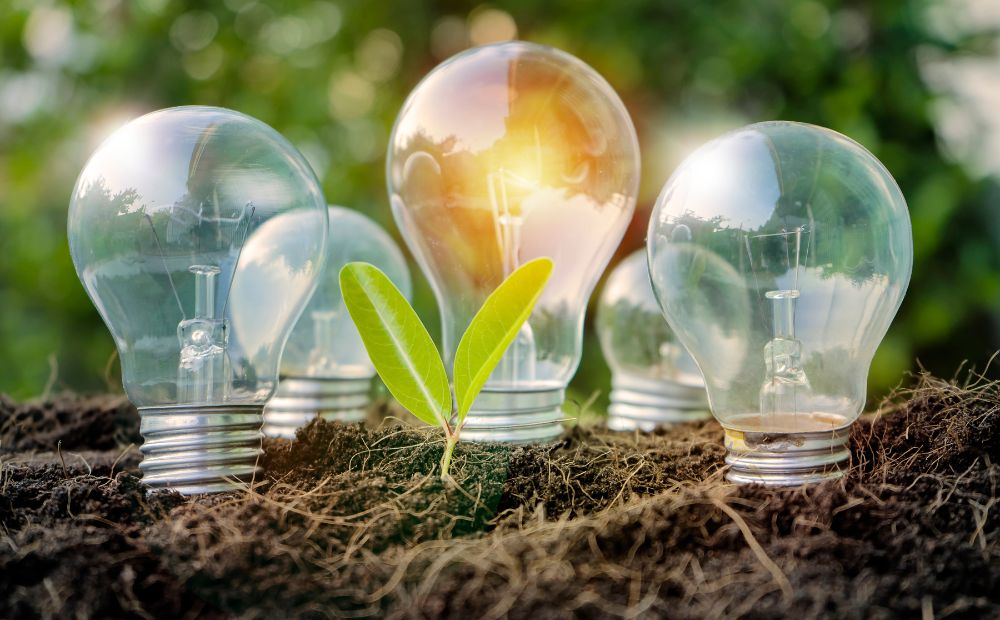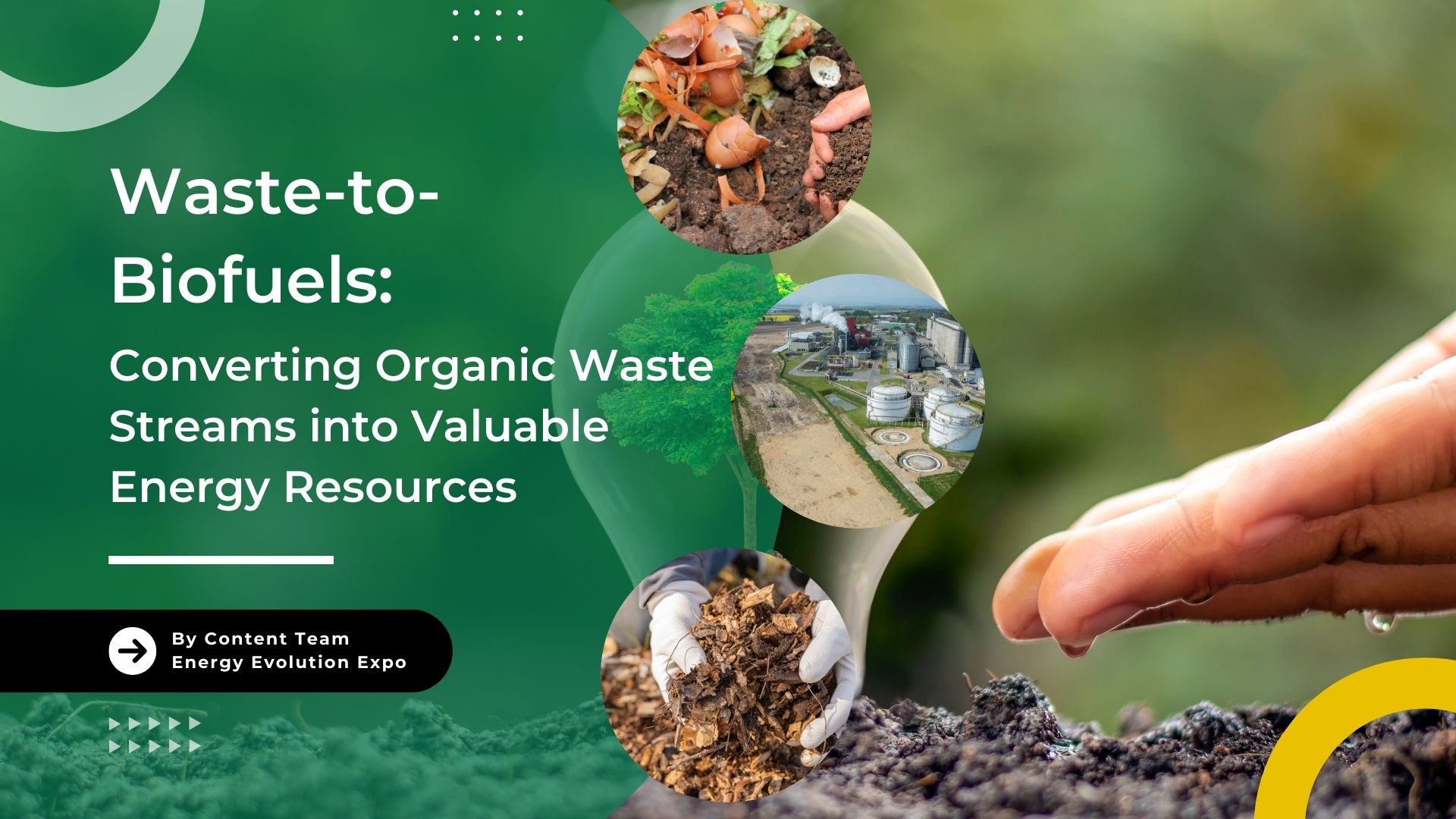Waste-to-Biofuels: Converting Organic Waste Streams into Valuable Energy Resources
Waste-to-Biofuels: Converting Organic Waste Streams into Valuable Energy Resources
Introduction
Biofuels, a cornerstone of renewable energy, represent a sustainable solution to the world’s energy needs. Derived from organic materials like biomass, biofuels offer a cleaner alternative to fossil fuels, mitigating greenhouse gas emissions and reducing reliance on finite resources. Through advanced technologies, such as biochemical conversion and microbial fuel cells, biomass residues and waste are efficiently transformed into biofuels, ensuring optimal resource utilization. From bioethanol to biodiesel, these fuels power vehicles, heat homes, and generate electricity, driving a shift towards a greener future. Embracing biofuels not only fosters energy security but also fosters economic growth while safeguarding the environment for generations to come.
Table of Contents
A Solution to Modern Energy Challenges
In light of the energy crisis of the 1970s, numerous countries have shown a keen interest in developing biomass as a viable fuel source. While there was a decrease in enthusiasm for biomass energy in recent times due to the affordability of fossil energy following technological advancements, the pressing concerns related to high greenhouse gas emissions, hazardous air pollution, fluctuating fossil fuel prices, and the escalating demand for global transportation fuels have spurred significant research endeavors in the field of bioenergy.
Bioenergy refers to energy derived from any fuel that originates from biomass, a renewable resource that is being increasingly recognized as a potential alternative feedstock to ensure sustainable energy production in the future.
Traditionally, biomass in the form of firewood has historically been utilized for providing energy to humans through direct combustion. In industrialized nations, a diverse array of feedstocks, such as agricultural and forestry residues, building and industrial waste, and municipal solid waste (MSW), are readily available for biofuel production.
These biofuels, produced from such feedstocks, are classified as second-generation biofuels. Unlike first-generation biofuels, which are derived from edible food crops like sugarcane, wheat, barley, corn, potato, soybean, sunflower, and coconut, second-generation biofuels are derived from lignocellulosic materials such as jatropha, cassava, switchgrass, wood, and straw, along with biomass residues.
Harnessing Biomass Residues for Sustainable Biofuels
Distinct from biomass deliberately grown for energy production, biomass residues and waste are produced as by-products throughout the cultivation, processing, and utilization of desired raw materials. These residues are classified into primary, secondary, and tertiary groups. Primary residues, such as corn stalks and straw, originate from the cultivation of food crops and forestry products. Secondary residues are created during the processing of food crops into end products, such as wood chips and rice hulls.
Tertiary residues emerge after the consumption of biomass-based products and may present as municipal solid waste (MSW), sewage sludge, or wastewater. These materials undergo conversion processes leading to a variety of bioenergy forms, such as syngas, bio-oil, biochar, electricity, biogas, bioethanol, biohydrogen, and biodiesel. Wood and agricultural residues, waste cooking oils, and microalgae biomass have demonstrated potential as valuable resources. Wood and agricultural residues, such as sawdust and corn stover, are viable options for use as feedstocks in the production of biofuels.

For instance, sawmill waste can be employed as boiler fuel or for the production of ethanol. Straw, a significant biomass source in China, is derived from harvested food crops such as rice and wheat. Corn stover shows promise for bio-butanol production, while residues from sugarcane, including bagasse and leaves, present opportunities for ethanol and biochar production. Additionally, palm kernel press cake, a by-product of palm oil extraction, can undergo fermentation to generate bioethanol.
Utilized cooking oils, such as used cooking oils, serve as a cost-effective resource for the production of biodiesel, resulting in a substantial reduction in material expenses. The application of waste oils not only decreases production costs but also tackles the environmental concerns linked to the disposal of substantial volumes of used frying oils.
The utilization of biodiesel blends derived from waste oils and diesel in engines can be implemented without significant alterations. Including both macroalgae and microalgae, the group known as microalgae presents a significant potential as a source of oil due to their notable lipid storage capabilities and rapid growth rates. Microalgae, specifically, have garnered interest for their potential as a feedstock for biofuels, as they do not require agricultural land or freshwater resources.
Once the desired products, such as oils, are extracted from microalgae biomass, the remaining biomass can be utilized for the production of biofuels.
Advanced Technologies for Bioenergy from Biomass Residues
The current review offers a comprehensive examination of the technological intricacies involved in converting biomass residues and waste into biofuels and bioelectricity. Specifically, it outlines various waste-to-energy conversion options. The technologies discussed in this review comprise gasification, liquefaction, pyrolysis, anaerobic digestion, alcoholic fermentation, photobiological hydrogen production, transesterification, supercritical fluid processing, combustion, and photosynthetic microbial fuel cells (MFC).
This review aims to provide a thorough understanding of the latest developments in bioenergy production from biomass residues and waste within the swiftly evolving bioenergy sector.
Key Conversion Technologies
1. Thermochemical Conversion:
Thermochemical conversion includes processes such as pyrolysis, gasification, and combustion. These processes convert organic waste into energy through high-temperature treatment. For instance:
- Pyrolysis involves the thermal decomposition of organic materials in the absence of oxygen, producing bio-oil, syngas, and biochar.
- Gasification converts organic waste into syngas (a mixture of hydrogen, carbon monoxide, and carbon dioxide) by reacting the material at high temperatures with a controlled amount of oxygen.
- Combustion directly burns organic waste to produce heat and electricity.
2. Biochemical Conversion:
Biochemical conversion processes includes:
- Anaerobic digestion is a biological process that breaks down organic matter in the absence of oxygen, producing biogas (a mixture of methane and carbon dioxide) and digestate (a nutrient-rich substance). This technology is widely used for managing agricultural waste, sewage sludge, and food waste. The produced biogas can be used for heating, electricity generation, or upgraded to biomethane for use as a vehicle fuel.
- Fermentation process is used to produce bioethanol from sugar and starch-rich crops. This process involves the breakdown of carbohydrates by enzymes and microorganisms into ethanol and carbon dioxide. Bioethanol is a renewable fuel that can be blended with gasoline or used as a feedstock for producing chemicals.
- Photobiological hydrogen production is a process observed in certain biomass, such as microalgae, which naturally generate hydrogen gas in the presence of light.
3. Microbial Fuel Cells (MFCs)
A promising recent technology for converting biomass into electricity involves Microbial Fuel Cells (MFCs). MFC technology utilizes electrogenic bacteria to generate bioelectricity by converting organic substrates under anaerobic conditions.
Typically, MFCs consist of two chambers separated by a proton exchange membrane, with a biotic anode and an abiotic cathode. This setup allows MFCs to simultaneously treat various types of waste, such as food waste, household food waste, and municipal solid waste (MSW), while producing electricity, offering a novel source of renewable energy.
The current and power density generated by MFCs can be influenced by operational factors like temperature, substrate concentration, pH, loading rate, microbial activity, hydraulic retention time, and the presence of a static magnetic field. Additionally, research has focused on optimizing electrode materials, architectures, cost-effectiveness, and membrane characteristics to enhance electricity generation in MFCs. Studies have shown that using Ti-TiO2 electrodes can yield significantly higher power density compared to Pt electrodes, and employing food residue biomass as a substrate can further boost MFC performance. Overall, MFCs hold great potential as a green and sustainable process, offering new opportunities for bioelectricity generation.
4. Transesterification
Biomass-derived biofuels often exhibit high viscosity, low energy density, and polyunsaturated characteristics, which can be addressed through various pretreatment methods, with transesterification emerging as the most promising. Transesterification involves the conversion of fats and oils into esters and glycerol in the presence of catalysts. The resulting fatty acid methyl ester (FAME) boasts physical characteristics comparable to commercial petroleum fuels, while the by-product glycerol holds commercial value.
Converting organic waste into energy resources represents a crucial step towards a sustainable and circular economy. By leveraging advanced conversion technologies, we can mitigate environmental impacts, enhance energy security, and derive economic benefits from waste materials. Continued research, innovation, and supportive policies are essential to overcome the challenges and fully realize the potential of waste-to-energy solutions.
To facilitate an understanding of the latest developments and trends in the Renewable energy Industry, various Conferences and Expos, which bring the Industry leaders together, are crucial.
The Energy Evolution Awards, Conference, and Expo
The Energy Evolution Awards, Conference, and Expo organized by Next Business Media is making its debut in Spain in 2025. It will be a leading forum dedicated to honoring excellence in Energy Technology, showcasing innovations, and fostering collaborations. The events unite industry leaders, and visionaries to explore the latest advancements, tackle key challenges, and shape the future of Energy.
The Energy Evolution Awards, Conference, and Expo will celebrate outstanding achievements, promote sustainable practices, and drive the Energy Industry forward into a technologically advanced sustainable era. Energy Evolution Awards, Conference, and Expo will be a platform for cultivating innovation and shaping a brighter, more efficient energy landscape.

Comments
Post a Comment